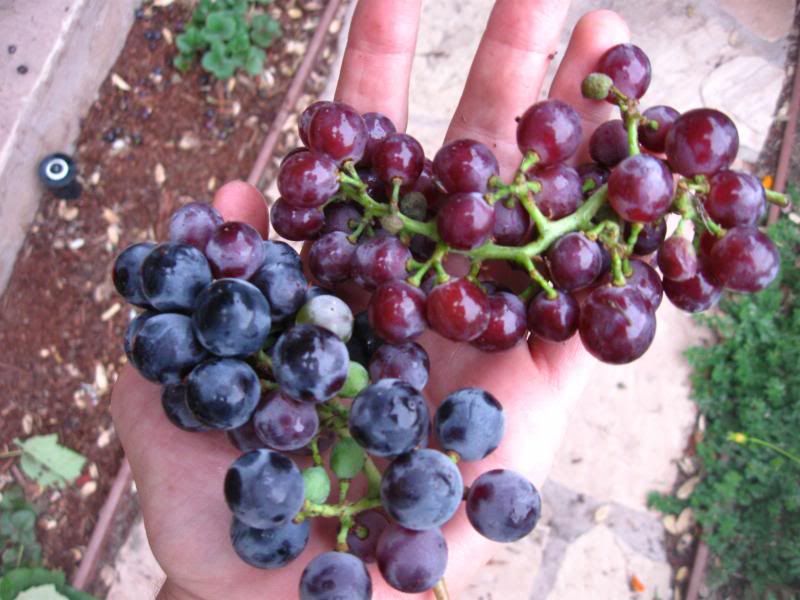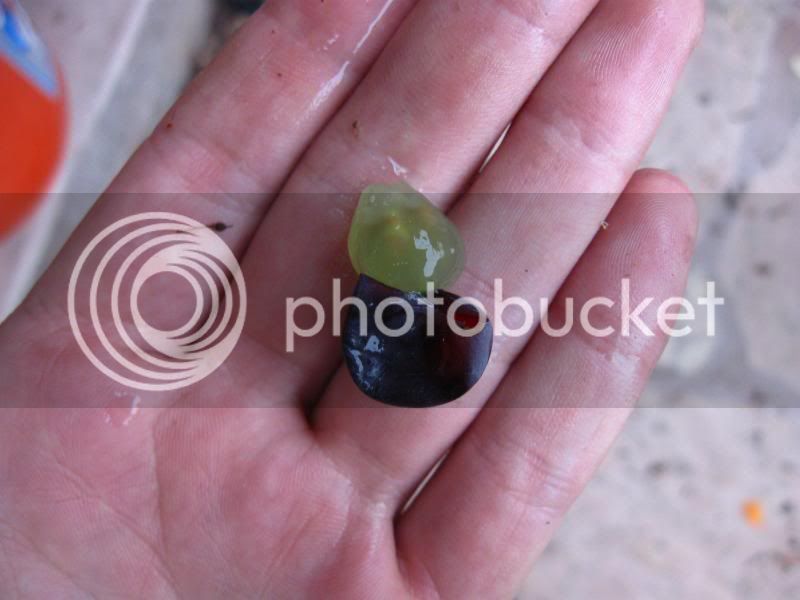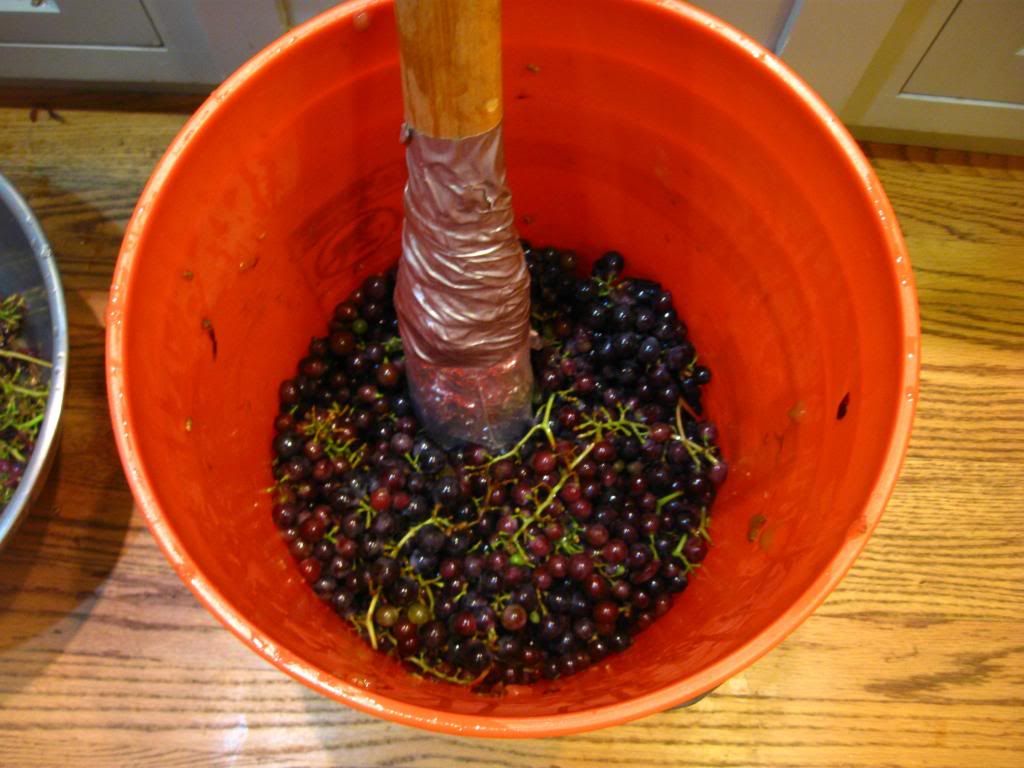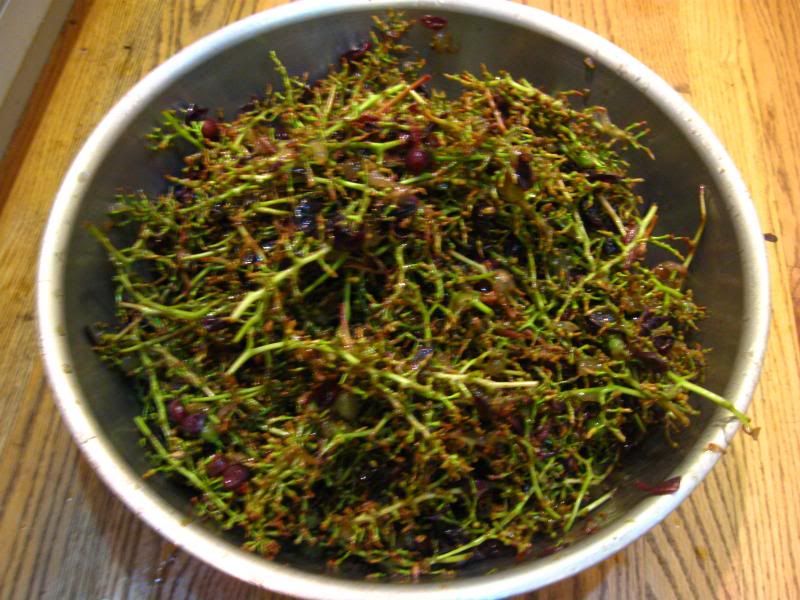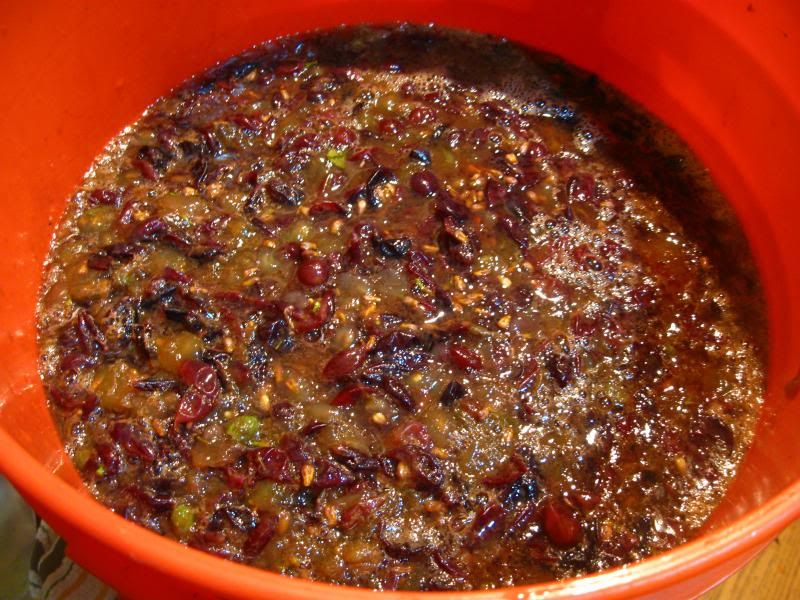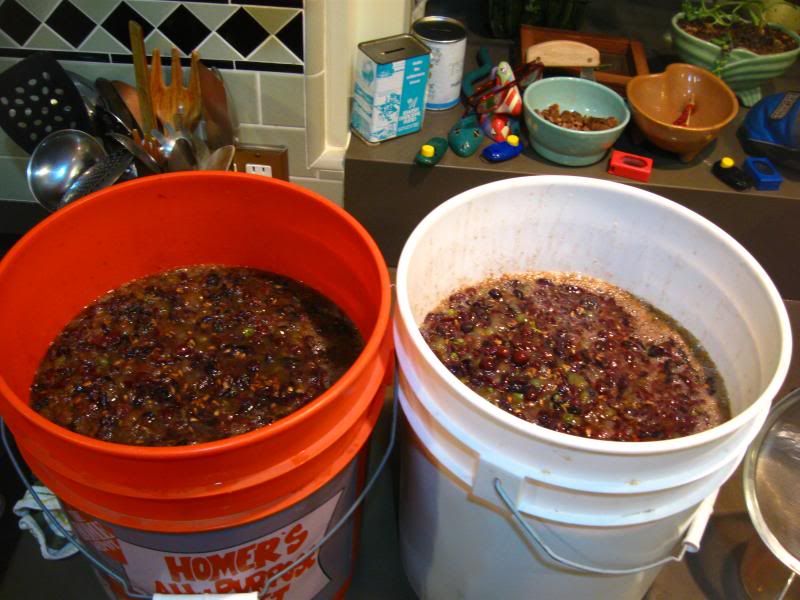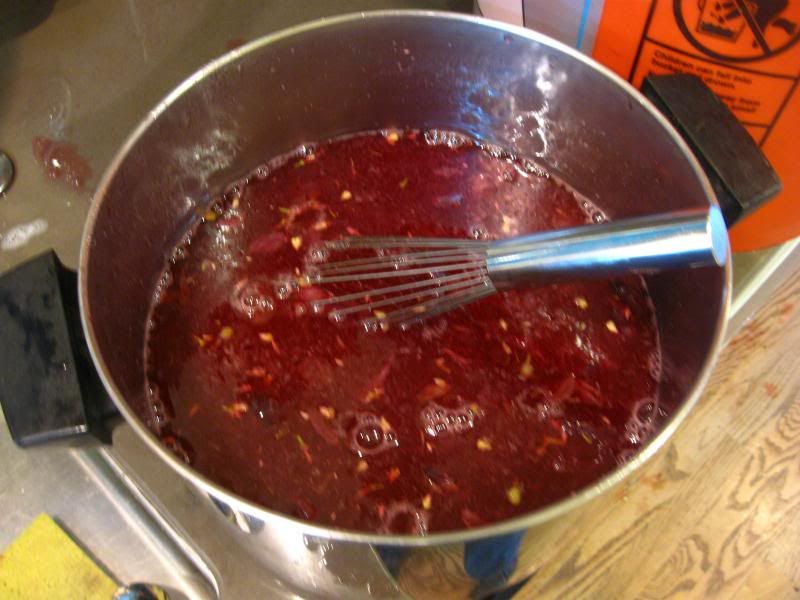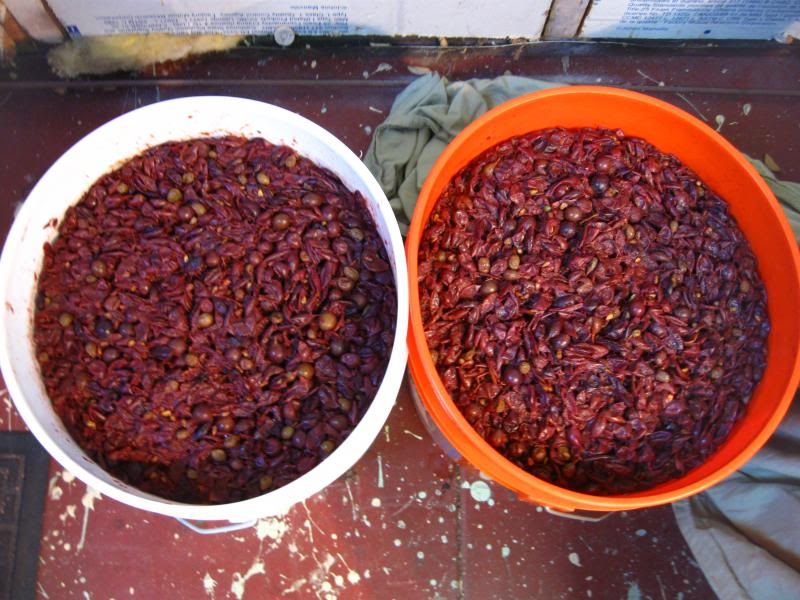My neighbor has a grape vine which produced more fruit than she could use so she let me harvest all the grapes which I plant to make into wine. I have made plum wine before based on a recipe I found on the internet and it turned out pretty good.
The grapes are small most smaller than a dime and dark purple when ripe. They have thick skins and a gel sack like concord grapes. I would like to make a red wine sweet or semi sweet wine (I realize I will have to backsweeten.) However, I haven't found as much information as I expected and am looking for some recipes or pointers. Does this recipe look good? http://www.grapestomper.com/recrwgrape.html Is it standard practice to add so much water and sugar to the grape mash? Also is there no need for a press to separate the skins from the juice?
Also I have seen mentions of adding acid blend to achieve desired acidity in the must, some of the grapes have some tartness even when ripe do you add a base such as sodium bicarbonate if the must is too acidic or is this unlikely to happen? Also any particular wine yeast recommendations?
The grapes are small most smaller than a dime and dark purple when ripe. They have thick skins and a gel sack like concord grapes. I would like to make a red wine sweet or semi sweet wine (I realize I will have to backsweeten.) However, I haven't found as much information as I expected and am looking for some recipes or pointers. Does this recipe look good? http://www.grapestomper.com/recrwgrape.html Is it standard practice to add so much water and sugar to the grape mash? Also is there no need for a press to separate the skins from the juice?
Also I have seen mentions of adding acid blend to achieve desired acidity in the must, some of the grapes have some tartness even when ripe do you add a base such as sodium bicarbonate if the must is too acidic or is this unlikely to happen? Also any particular wine yeast recommendations?



